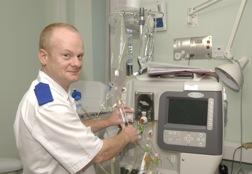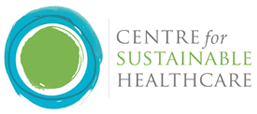- Group home
- You must register/login in order to post into this group.
Systematic review of dialysis prescriptions (use of dialysate autoflow facility)

By: Bradford Teaching Hospitals NHS Foundation Trust
£11,524 (Estimated)
3,715kg CO2e (Estimated)
A systematic review of haemodialysis prescriptions was undertaken to optimise and reduce the consumption of water, acid and bicarbonate, by using the dialysate autoflow facility on the Fresenius 5008 machine. Prior to implementation, patients dialysing using the Fresenius 5008 machine used either a 500mls/min or 800 mls/min dialysate flow. Following implementation of this change the options were 500mls/min or autoflow. Autoflow sets the dialysate flow rate to 1.5 times the blood flow rate. Therefore a patient dialysing with a 400mls/min blood flow would have a reduced dialysis fluid flow (600mls/min compared to a previous setting of 800 mls/min). This would allow the use 650g bibags rather than 900g bibags in addition to reduced consumption of water and acid concentrate.
Benefits to the environment
9% reduction in water usage for haemodialysis. 9% reduction in use of acid concentrate, use of smaller Bibags (as above).
The confirmed water saving over the first 8 months has been 95m3 per month, a total of 760m3. Total predicted annual water saving = 1140m3.
Estimated greenhouse gas savings from reduced pharmaceutical procurement (£5,760 saved on bibags + £2,880 saved on acid concentrate, per year = £8,640 total):
= £8,640 x 0.43*
= 3,715 kg CO2e per year
* emissions factor for pharmaceuticals, Annex 13, 2012 Guidelines to Defra / DECC's GHG Conversion Factors for Company Reporting
Cost Benefit to Trust
Investment: staff time only.
Financial savings: direct saving in cost of Bibags of £ 5,760 p.a. plus savings in water and acid concentrates of £2,884 and £ 2,880 respectively = £11,524 per year.
Quality of care: no negative impact on dialysis adequacy.
Details of implementation
The project was implemented by a multi professional team, comprising Gary Carlisle (ward manager), David Croft (chief renal technologist) and Dr John Stoves (consultant nephrologist).
Staff were informed of the planned change and asked to identify patients who would continue to require 900g bibags (i.e. those with 500mls/min blood flow or greater than 4 hours treatment time). Staff were shown how to activate the autoflow facility. Stocks of 650g bibags were increased and a switchover date set. The patients’ dialysis adequacy for the first two months following switchover was compared with dialysis for the two months prior to switchover, to confirm that there was no reduction in the delivered dose of dialysis.
To reduce the environmental and financial and cost of haemodialysis
Joint winner of the 2013 Green Nephrology Award
